Witness the integration of Islamic culture, architecture, commerce, entertainment, and catering. Witness the gathering place of Xinjiang products. Here is what's called the "Window of Xinjiang," a highly recommended stop at the Urumqi: Xinjiang International Grand Bazaar.
Located in the center of Urumqi, capital city of northwest China's Xinjiang Uygur Autonomous Region, the bazaar is the world's largest by scale, with a construction area of 100,000 square meters.
The six main buildings and the iconic 80-meter-high sightseeing tower are favorites with tourists from all over the world.
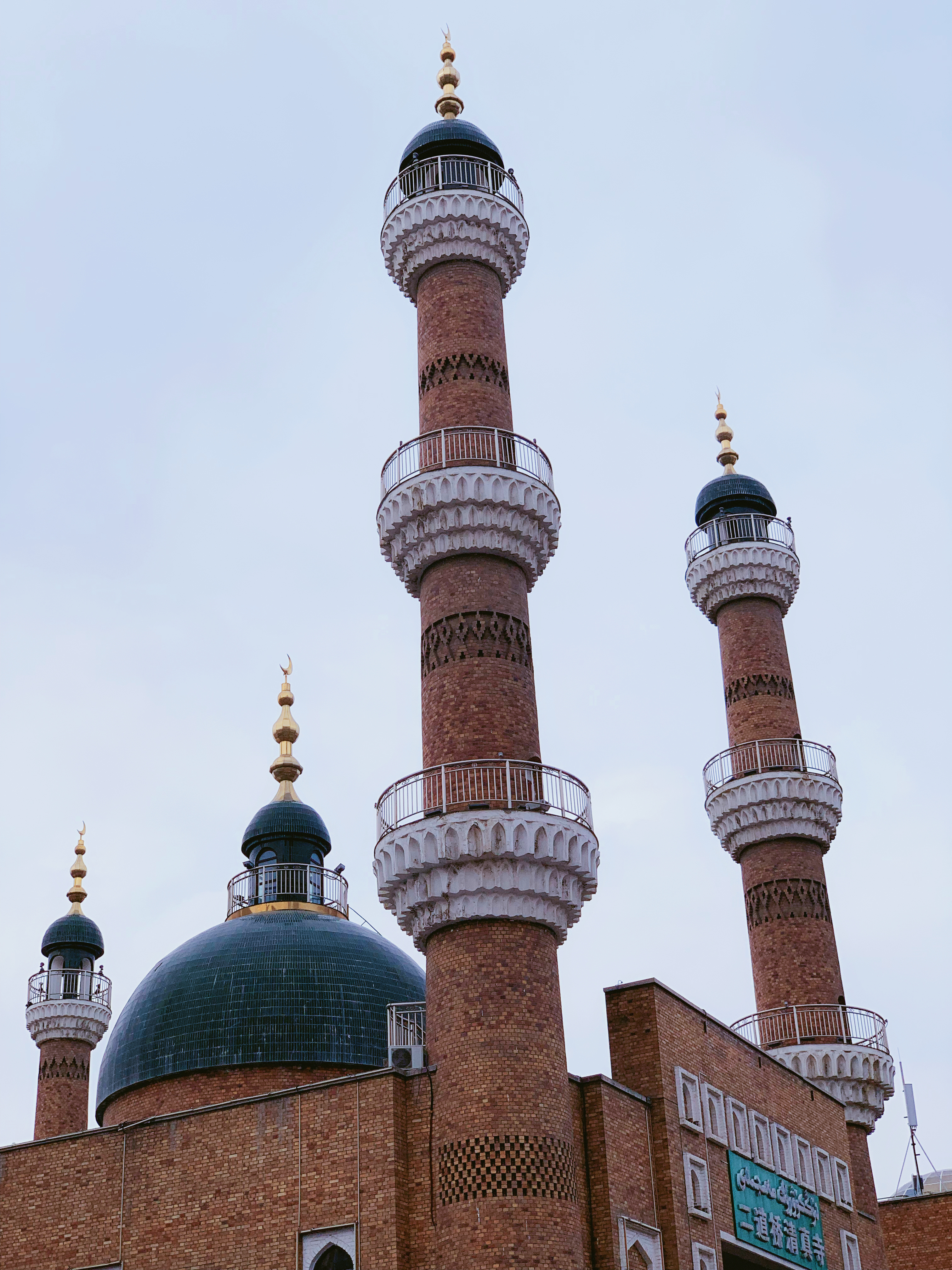
The Xinjiang International Grand Bazaar is the world's largest by scale, with a total construction area of 100,000 square meters, in Urumqi, capital city of northwest China's Xinjiang Uygur Autonomous Region. /CGTN
The Xinjiang International Grand Bazaar is the world's largest by scale, with a total construction area of 100,000 square meters, in Urumqi, capital city of northwest China's Xinjiang Uygur Autonomous Region. /CGTN
Visitors are dazzled by the array of products which include dried fruits, jade, ethnic costumes and handicrafts in Xinjiang style.
You don't have to worry that the products aren't local enough or that you don't know how to use the instruments or how to eat food you'd never encountered before. Some 70 percent of the 1,480 vendors are Uygur, and they'd love to introduce you to their way of living. Some stall owners selling musical instruments will even play them to show the charm of Xinjiang music and those instruments.
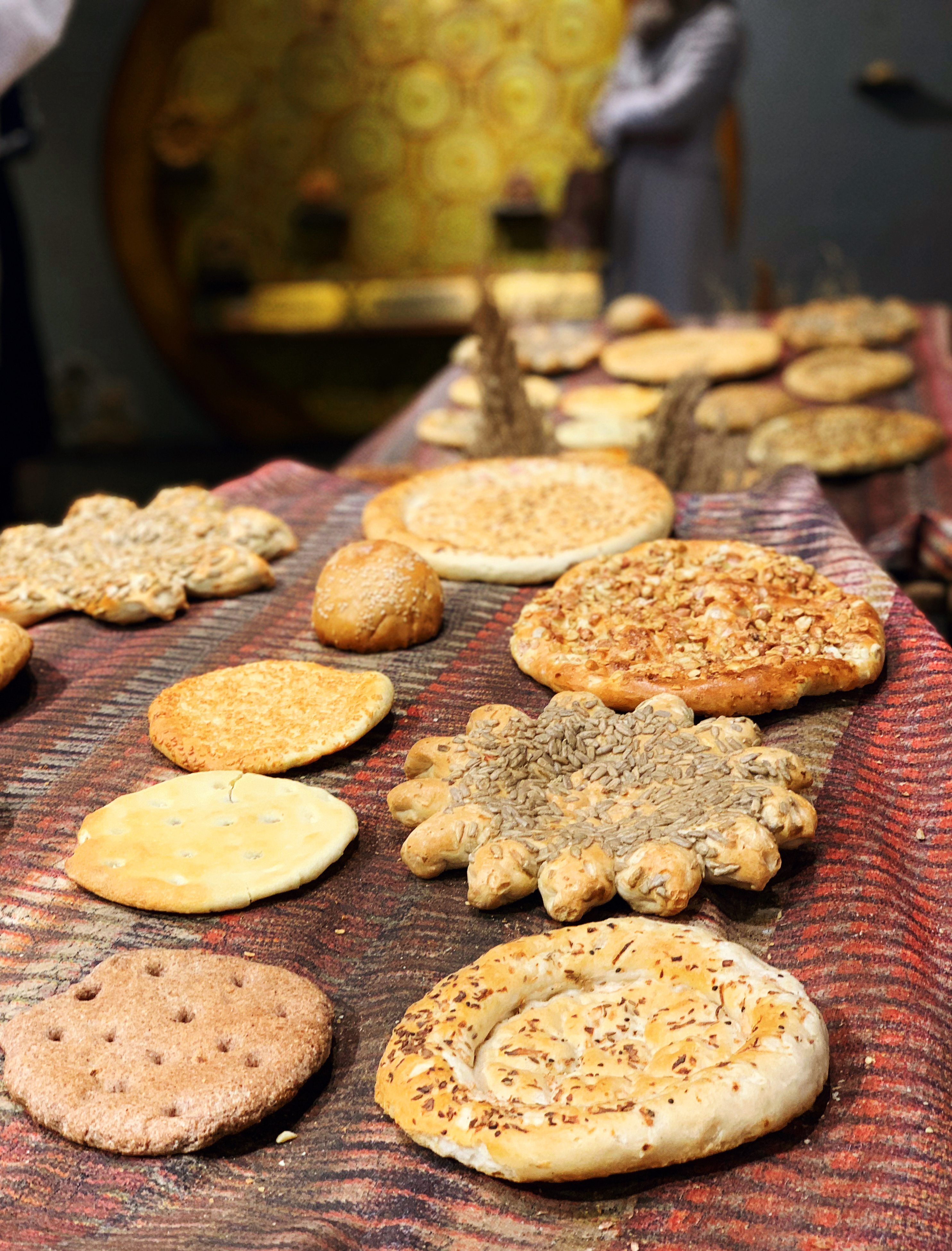
Nang, a traditional Xinjiang steamed bread, exhibited in the Xinjiang International Grand Bazaar in Urumqi, capital city of northwest China's Xinjiang Uygur Autonomous Region. /CGTN
Nang, a traditional Xinjiang steamed bread, exhibited in the Xinjiang International Grand Bazaar in Urumqi, capital city of northwest China's Xinjiang Uygur Autonomous Region. /CGTN
Although the construction of the giant bazaar was completed in 2003, "going to the bazaar" has been an important activity through the ages, including during the ancient Silk Road heyday.
The word "bazaar", originated from the Persian language in the 15th century, means market. But in the region, it has evolved to be so much more in that it accommodates cross-cultural trading behaviors of Eurasian civilizations.
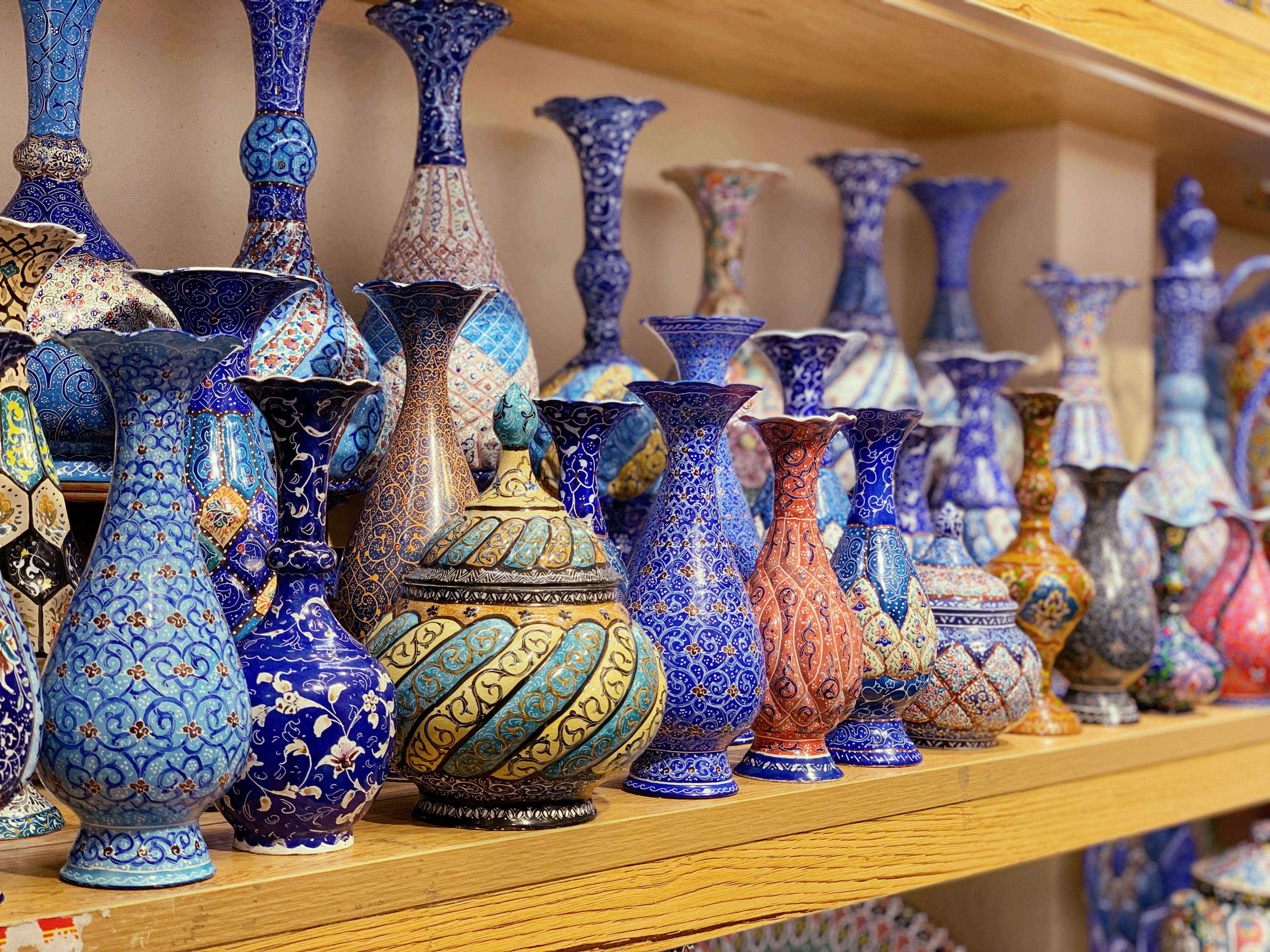
Enamel porcelain with a fusion of East Asian styles displayed in the Xinjiang International Grand Bazaar in Urumqi, capital city of northwest China's Xinjiang Uygur Autonomous Region. /CGTN
Enamel porcelain with a fusion of East Asian styles displayed in the Xinjiang International Grand Bazaar in Urumqi, capital city of northwest China's Xinjiang Uygur Autonomous Region. /CGTN
Since the Han Dynasty ( 202 BC- 220 AD), "border bazaars" have flourished.
The entire Silk Road is almost a business travel road composed of countless bazaars. Each is like a miniature world, accommodating different cultures and ethnic groups.
As the Han Dynasty explored the western area, nations in western area also completed various forms of folk trade with the dynasty through these nameless bazaars.
A history of these special markets is a history of indefatigable traveling traders on the Silk Road, who not only exchanged goods but shared experiences.
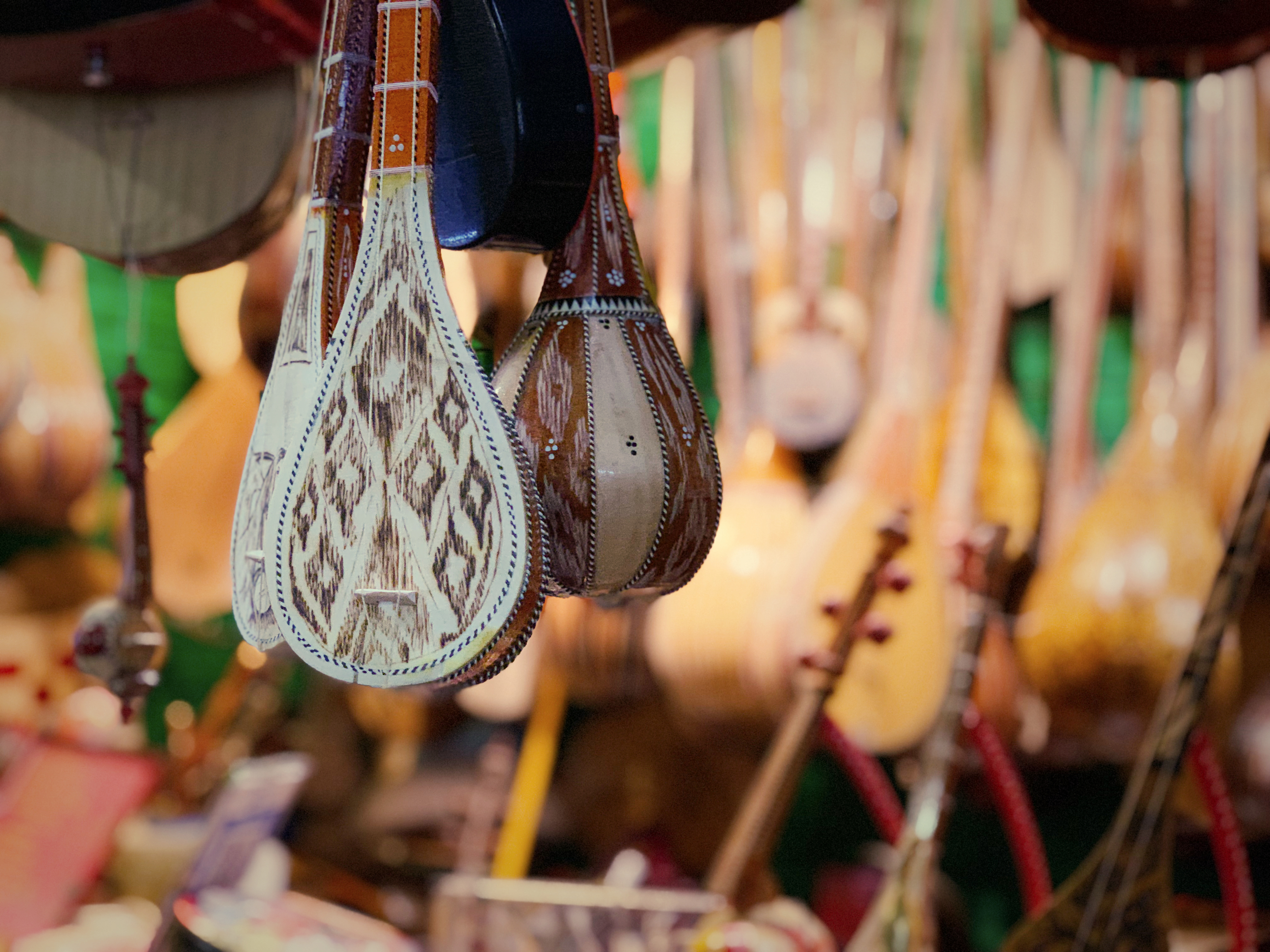
Xinjiang instruments stall in the Xinjiang International Grand Bazaar in Urumqi, capital city of northwest China's Xinjiang Uygur Autonomous Region. /CGTN
Xinjiang instruments stall in the Xinjiang International Grand Bazaar in Urumqi, capital city of northwest China's Xinjiang Uygur Autonomous Region. /CGTN
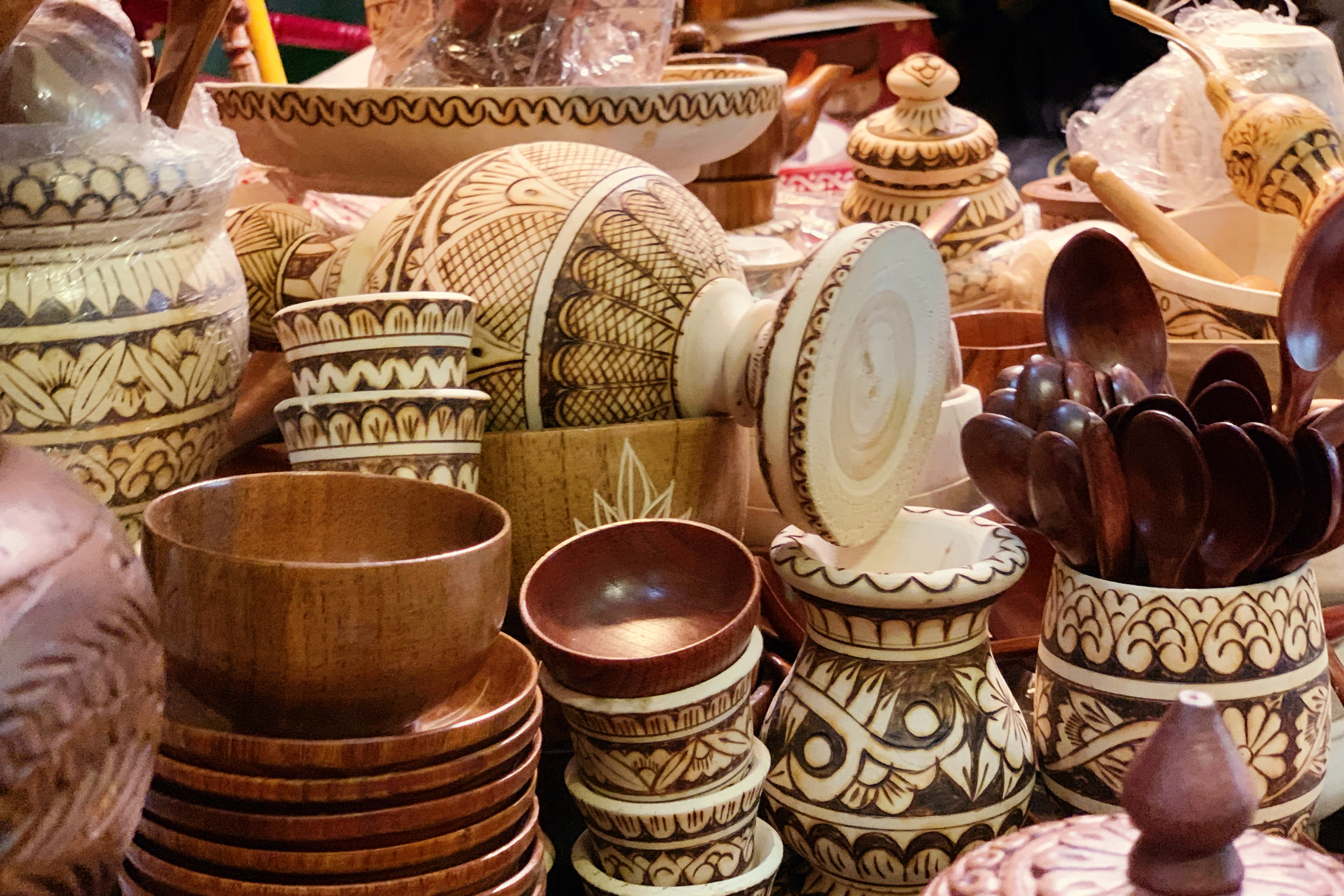
Wooden vessels with ethnic characteristics of Xinjiang in the Xinjiang International Grand Bazaar in Urumqi, capital city of northwest China's Xinjiang Uygur Autonomous Region. /CGTN
Wooden vessels with ethnic characteristics of Xinjiang in the Xinjiang International Grand Bazaar in Urumqi, capital city of northwest China's Xinjiang Uygur Autonomous Region. /CGTN
Today's Xinjiang International Grand Bazaar seems to attract tourists with the customs of Xinjiang. The small bazaars scattered all over the cities are the place to meet the daily shopping needs of residents.
Nowadays the bazaar has opened a direct train to connect patrons with famous tourist attractions in Xinjiang. With the continuous expansion and improvement of the supporting service system, the bazaar has formed a "grand tourism" environment pattern integrating food, accommodation, travel, tourism, entertainment, shopping and ethnic folk culture.
(Top image designed by Gao Hongmei.)

